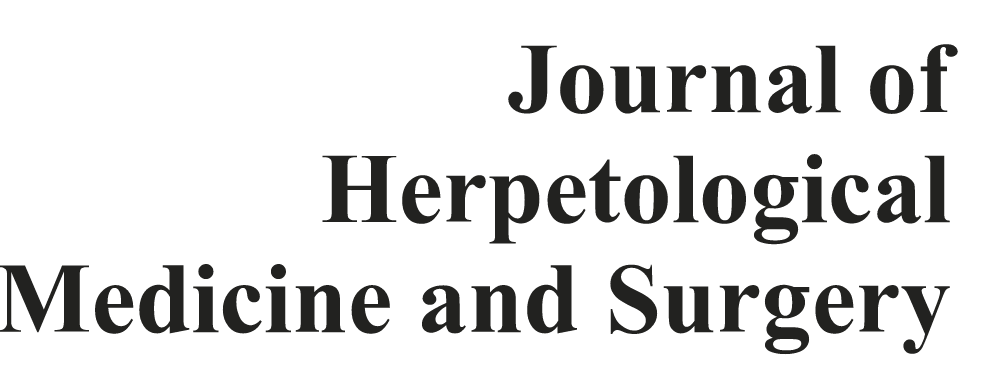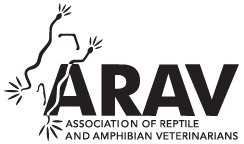Wound Management, Including the Use of an Extracellular Matrix Powder, in a Blue-Tongued Skink (Tiliqua scincoides)
Abstract
A 10 year old intact male, blue-tongued skink (Tiliqua scincoides) presented with large dorsal wounds penetrating deep into the coelomic cavity. After initial debridement, decontamination, and bandaging, a powdered form of porcine extracellular matrix (ECM) was applied to the wound and covered with a non-adhesive bandage. Three days following application, a thin crust formed over the wound bed. Within 7 days of application, reduced wound depth and granulation tissue were present, at which point the crust was removed and a second application of ECM powder was made. Eleven days after initial application, approximately 50% of the wound was covered by thin epithelial tissue extending from the wound margins. Fifteen days after the first application, 100% of the wound appeared to be covered with thin epithelial tissue with marginal crusting. The patient was discharged 24 days post presentation (15 days post initial ECM application) with no further treatment. The owner was instructed to remove the bandage 7 days post discharge. Twenty-four days after the initial application, the owner reported a full shed with complete epithelization and no further crusting. The patient was followed up 31 days after the initial presentation and was assessed as recovered from the initial wounds. To the author’s knowledge, this is the first reported use of an ECM powder, or a xenogeneic material, used to treat a traumatic wound in a Tiliqua.

Day 1: A blue-tongued skink (Tiliqua scincoides) presented to the hospital with multiple deep wounds to the dorsum from a presumed rodent attack. The green arrow annotates exposed ribs. The yellow arrow is annotating exposed vertebra. The white arrows are annotating the exposed celomic cavity.

Day 3: The wounds on the blue-tongued skink (Tiliqua scincoides) have been debrided of visible devitalized tissue and the coelomic communications appear sealed. The vertebrae are still exposed and the ribs are less visible.

Day 9: The wounds on the blue-tongued skink (Tiliqua scincoides) remain clean and there is evidence of contracture of the most cranial wound; however, the depth of the wound is minimally changed. Vertebrae remain visible and the wounds are moderately exudative.

Day 9: The initial application of a decellularized, extracellular matrix (ECM) powder derived from multiple porcine cell lines on wounds in a blue-tongued skink (Tiliqua scincoides).

Day 12: Blue-tongued skink (Tiliqua scincoides) 3 days post ECM application, a thin crust covers the wound bed. Heme pigment breakdown is responsible for the green color seen within part of the crust. Contracture of the wound is becoming evident.

Day 16: Blue-tongued skink (Tiliqua scincoides) 7 days post ECM application; an intact crust layer is present with scabbing over a proportion of the wound margins. The width of the wound beds are decreased, indicating significant contracture.

Day 16: Blue-tongued skink (Tiliqua scincoides). The crust is removed to observe the underlying wound bed. A healthy bed of granulation tissue is present. The vertebrae and ribs are no longer visible, the wound depth has decreased, and the coelomic cavity is sealed.

Day 16: A second application of the ECM powder was applied to the wound bed of the blue-tongued skink (Tiliqua scincoides).

Day 20: Blue-tongued skink (Tiliqua scincoides) 11 days post initial application of the ECM and 4 days after the second application; a thin crust is present with scabbing of the wound margins extending over a large portion of the wound. Further contracture is evident.

Day 24: Blue-tongued skink (Tiliqua scincoides) 15 days after the initial application of the ECM powder; the wounds continued to exhibit further contracture and were covered by the protective crust. The patient was discharged.

Day 42: Blue-tongued skink (Tiliqua scincoides) 31 days after the initial ECM powder application; the skink presented post ecdysis with a thin, purple tissue covering the wound sites.



